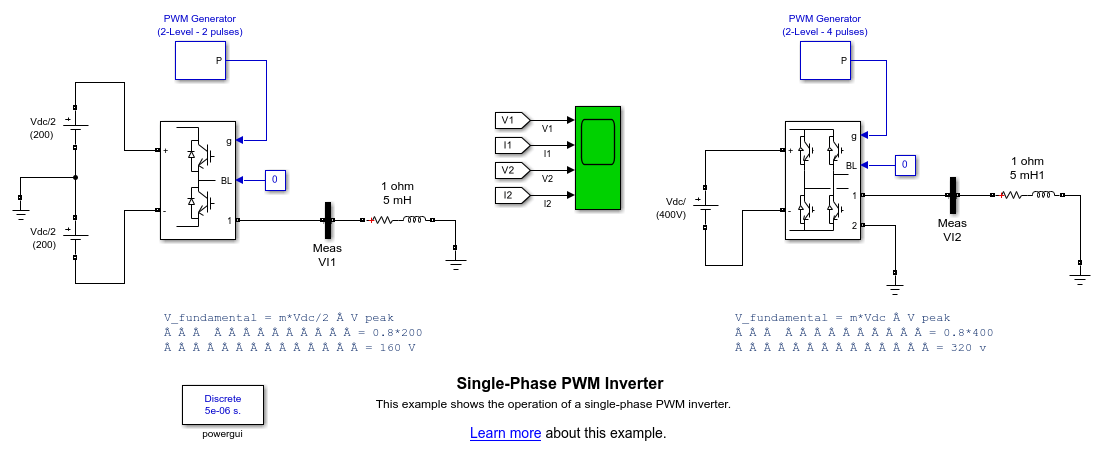Single-Phase PWM Inverter
This example shows the operation of a single-phase PWM inverter.

Description
The system consists of two independent circuits illustrating single-phase PWM voltage-sourced inverters.
The Half-Bridge Converter block and the Full-Bridge converter block are modeling simplified model of an IGBT/Diode pair where the forward voltages of the forced-commutated device and diode are ignored.
The converters are controlled in open loop with the PWM Generator blocks. The two circuits use the same DC voltage (Vdc = 400V), carrier frequency (1620 Hz) and modulation index (m = 0.8).
In order to allow further signal processing, signals displayed on the Scope block are stored in a variable named ScopeDataForFFT, in structure with time format.
Simulation
Run the simulation and observe the current into the loads and the voltage generated by the PWM inverters.
Once the simulation is completed, open the Powergui and select FFT Analysis to display the 0 - 5000 Hz frequency spectrum of signals saved in the ScopeDataForFFT structure. The FFT will be performed on a 2-cycle window starting at t = 0.07 - 2/60 (last 2 cycles of recording). Click on Display and observe the frequency spectrum of last 2 cycles.
The fundamental component of V inverter is displayed above the spectrum window. Compare the magnitude of the fundamental component of the inverter voltage with the theoretical values given in the circuit. Compare also the harmonic contents in the inverter voltage.
The half-bridge inverter generates a bipolar voltage (-200V or +200V). Harmonics occur around the carrier frequency (1620 Hz +- k*60 Hz), with a maximum of 103% at 1620 Hz.
The full-bridge inverter generates a monopolar voltage varying between 0 and +400V for one half cycle and then between 0 and -400V for the next half cycle. For the same DC voltage and modulation index, the fundamental component magnitude is twice the value obtained with the half-bridge. Harmonics generated by the full-bridge are lower and they appear at twice the carrier frequency (maximum of 40% at 2*1620+-60 Hz). As a result, the current obtained with the full-bridge is smoother.